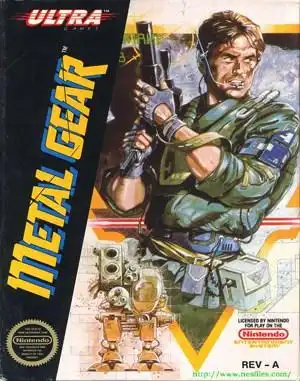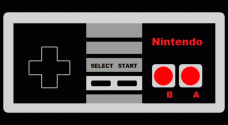For many of us who grew up with a controller in hand during the late 80s and 90s, few series left a mark quite like Metal Gear. It wasn't just another action game; it was something different, something that demanded patience, observation, and a healthy dose of weirdness. Long before cinematic gaming was the norm, Hideo Kojima's brainchild was pushing boundaries, wrapping intricate plots around groundbreaking stealth mechanics.
From its 2D roots on the MSX and NES to its revolutionary leap into 3D on the PlayStation, Metal Gear carved out its own niche. It taught us that sometimes, the best way forward wasn't to shoot everything in sight, but to hide in a cardboard box and wait for the perfect moment. Let's take a nostalgic look back at what made the early Metal Gear games so special and why they continue to resonate with retro gamers today.
The Genesis of Stealth: From 2D Pixels to 3D Polygons
While Metal Gear Solid on the PlayStation often gets the spotlight (and deservedly so), the series' foundations were laid in the 8-bit era. The original Metal Gear (1987) and Metal Gear 2: Solid Snake (1990) on the MSX introduced the core concept: infiltration and evasion rather than direct combat. You were often under-equipped, forcing you to rely on your wits, radar, and the environment to survive.
The jump to PlayStation with Metal Gear Solid (1998) was seismic. Suddenly, the world was in 3D, filled with detailed environments (for the time!), voice acting, and cinematic cutscenes that felt revolutionary. This wasn't just an upgrade; it was a complete reimagining that brought the tension and strategy of stealth to life in a way never before seen on consoles. It set a new standard for presentation and narrative depth in games.
More Than Just Sneaking: What Made Metal Gear Unique?
Beyond the core stealth gameplay – crawling through vents, peeking around corners, using distractions – the early Metal Gear games were packed with elements that became series hallmarks:
- Deep, Often Bonkers Storylines: The plots were complex, tackling themes like nuclear proliferation, genetic engineering, and the nature of identity, all wrapped up in espionage melodrama and sci-fi tropes.
- Memorable Characters: From the gravelly voice of Solid Snake to the eccentric bosses of FOXHOUND, the characters were larger than life and often incredibly well-written, even if the dialogue occasionally veered into B-movie territory (in the best way).
- The Codec/Radio System: Those frequent calls to Otacon, Campbell, Meryl, and others weren't just exposition dumps. They were a lifeline, offering hints, lore, character interactions, and often pausing the intense action for a moment of connection (or a lengthy philosophical debate). Hearing "Snake? Snake! SNAAAAKE!" through your TV speaker is an iconic retro gaming memory.
- Breaking the Fourth Wall: Hideo Kojima loved to mess with players. The Psycho Mantis boss fight in MGS1, reading your memory card or requiring you to swap controller ports, is legendary. These moments weren't just gimmicks; they playfully blurred the lines between player and protagonist.
- Iconic Boss Fights: Each boss felt like a puzzle, requiring you to use your environment and stealth skills in unique ways, rather than just trading bullets.
These elements combined to create an experience unlike anything else available, cementing Metal Gear's place as a true innovator.
The Legacy Lives On
The impact of Metal Gear Solid, in particular, can't be overstated. It didn't invent stealth games, but it popularized and refined the genre for a mainstream audience. Its cinematic presentation influenced countless games that followed, proving that video games could tell complex, engaging stories with high production values.
Even today, the series' unique blend of tense stealth, dramatic narrative, and quirky humor holds a special place in the hearts of many gamers. Replaying these titles isn't just about revisiting old mechanics; it's about stepping back into a distinct world that felt both grounded and utterly bizarre.
How to Revisit the Classics Today
Feeling the urge to don the bandana and crawl through a ventilation shaft? Luckily, Konami has made it easier than ever to play the early Metal Gear games on modern platforms.
- Metal Gear Solid: Master Collection Vol. 1: This collection is arguably the best way to dive back in. It includes Metal Gear, Metal Gear 2: Solid Snake (the MSX versions), Metal Gear Solid (with its VR Missions/Special Missions), Metal Gear Solid 2: Sons of Liberty, and Metal Gear Solid 3: Snake Eater. It's available on PC (Steam), PlayStation, Xbox, and Switch.
- Original Hardware: If you still have your old consoles (MSX, NES, PlayStation, PS2, PS3), digging them out offers the most authentic, nostalgic experience – complete with CRT scanlines if you're dedicated!
- Digital Stores: The PS3 and PSP stores previously offered MGS1 and other titles digitally, though access might vary now. The Master Collection largely supersedes these.
- Emulation: For the truly retro titles (MSX/NES), emulation via tools like DOSBox (for MSX versions) or other emulators remains an option, though the Master Collection is the official route.
Whichever path you choose, experiencing (or re-experiencing) the early Metal Gear games is a must for any retro gaming enthusiast.
Why Metal Gear Still Holds Up
While polygon counts have soared and graphics have become photorealistic, the core design and narrative ambition of the early Metal Gear games ensure they remain compelling. The tension of being spotted, the satisfaction of a perfectly executed infiltration, the sheer absurdity of some plot points – it all adds up to an experience that is still fun, challenging, and uniquely Metal Gear.
So, grab your codec, find a sturdy cardboard box, and get ready to hear "SNAKE?!" once more. Shadow Moses awaits!
FAQ
Q: What is Metal Gear known for? A: Metal Gear is primarily known for popularizing and refining the stealth genre, its complex and often unconventional storylines, memorable characters, cinematic presentation, and breaking the fourth wall.
Q: Which Metal Gear game should I play first? A: For the classic 3D experience, Metal Gear Solid (PS1/Master Collection) is the standard starting point for many. If you want to see the very beginnings, the MSX Metal Gear games are included in the Master Collection.
Q: Is Metal Gear Solid still worth playing today? A: Absolutely! While visually dated compared to modern games, its core gameplay, story, characters, and unique style hold up incredibly well and are highly influential.
Q: What's the Metal Gear Solid: Master Collection? A: It's a digital bundle available on modern platforms that includes ports of the earliest main games in the series, such as Metal Gear 1 & 2 (MSX), Metal Gear Solid 1, 2, and 3.


